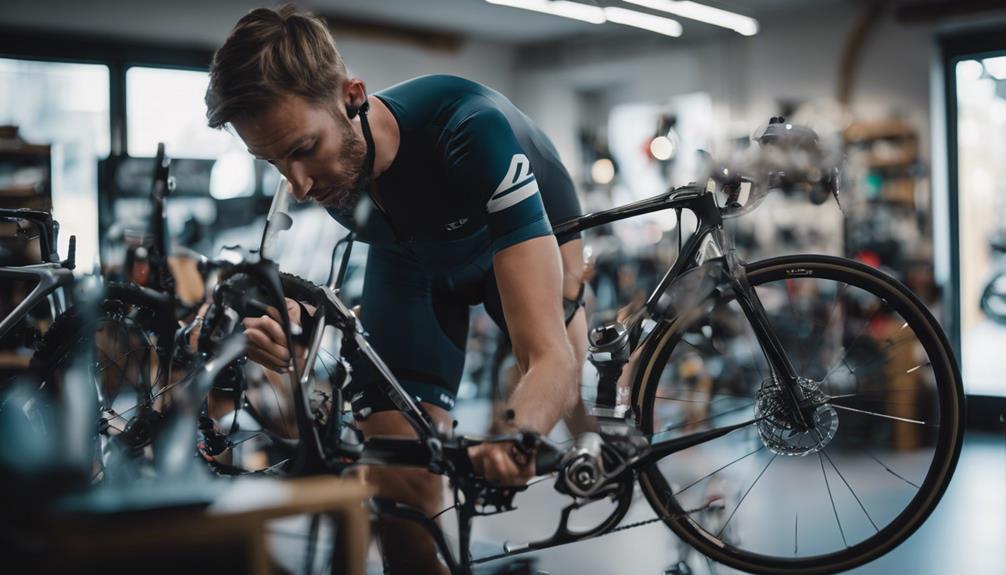Enduro mountain biking has surged in popularity over the past decade, attracting riders who seek the perfect blend of adrenaline, challenge, and technical skill. This discipline focuses on descending, but it also requires climbing skills, making it unique compared to traditional downhill or cross-country biking. In this article, we will delve into the world of enduro mountain biking, exploring its origins, key skills needed, best practices, equipment, and the vibrant community surrounding this exciting sport.
What is Enduro Mountain Biking?
Enduro mountain biking is a race format that emphasizes timed downhill segments while allowing riders to climb to the top at their own pace. Riders are often timed on specific downhill sections, with the total time determining the winner. The sport blends the thrill of downhill riding with the endurance of cross-country cycling, making it a favorite for many mountain bikers.
The Origins of Enduro Mountain Biking
Enduro mountain biking originated in the late 1990s and early 2000s, primarily in Europe. The need for a race format that combined the technical challenges of downhill racing with the endurance aspect of cross-country riding led to the development of this hybrid discipline. The first major enduro events were held in France, where riders began to embrace the idea of timed descents and untimed climbs.
Key Milestones in Enduro History
- 2003: The first official enduro race, the Megavalanche, takes place in Alpe d’Huez, France.
- 2013: The Enduro World Series (EWS) is established, bringing international recognition and structure to the sport.
- 2020: Enduro mountain biking gains further traction as athletes and enthusiasts flock to events worldwide, increasing participation rates significantly.
The Skills You Need for Enduro Mountain Biking
To excel in enduro mountain biking, riders must develop a diverse skill set. Here are some essential skills every enduro rider should work on:
- Climbing Technique: Efficient climbing requires good pedal stroke mechanics and body positioning. Riders should practice climbing steep and technical trails.
- Descending Control: Mastering downhill techniques, such as cornering and braking, is crucial. Riders should focus on maintaining speed while navigating obstacles.
- Bike Handling: Being able to maneuver over rocks, roots, and other terrain features is key. Regular practice on various trail types will enhance bike handling skills.
- Physical Endurance: Enduro races can be physically demanding. Building cardiovascular endurance through cycling, running, or other activities is beneficial.
- Tactical Thinking: Riders must make quick decisions on the trail, choosing lines and managing energy efficiently during races.
Essential Gear for Enduro Mountain Biking
Having the right gear is vital for a successful enduro mountain biking experience. Here are the essential components:
- Mountain Bike: A suitable enduro bike typically features a full suspension system, with travel ranging from 140mm to 180mm. Brands like Trek, Specialized, and Santa Cruz offer models specifically designed for enduro racing.
- Helmet: A full-face helmet provides maximum protection during descents while maintaining comfort for climbing. Brands like Bell and Giro offer high-quality options.
- Protective Gear: Knee and elbow pads, gloves, and padded shorts enhance safety and comfort during rides.
- Clothing: Breathable, moisture-wicking fabrics help regulate body temperature. Look for jerseys and shorts specifically designed for mountain biking.
- Hydration System: Staying hydrated is crucial. Hydration packs or water bottles should be easily accessible during rides.
Top Enduro Mountain Biking Locations
The world is dotted with incredible trails that cater to enduro mountain bikers. Here are some of the top destinations:
- Whistler, Canada: Known for its extensive trail network and world-class bike park, Whistler offers a range of enduro trails for all skill levels.
- France: The French Alps, especially around resorts like Les Deux Alpes and Chamonix, provide stunning scenery and challenging terrain.
- Bend, Oregon: This area boasts diverse trails with varying difficulty, making it a popular spot for enduro enthusiasts.
- New Zealand: With its breathtaking landscapes, places like Queenstown offer incredible trails and a vibrant biking community.
Case Studies: Enduro Success Stories
Several athletes have made significant impacts in the enduro mountain biking scene. Their stories can inspire newcomers and seasoned riders alike.
Case Study 1: Richie Rude
Richie Rude, an American professional mountain biker, has made a name for himself in the Enduro World Series. He won the overall championship in both 2015 and 2016, showcasing his exceptional skills and determination. Rude’s training regimen includes a mix of endurance rides, technical drills, and strength training, demonstrating the importance of a well-rounded approach to the sport.
Case Study 2: Isabeau Courdurier
Isabeau Courdurier, a French rider, has also achieved remarkable success in the enduro scene, claiming multiple EWS titles. Her journey emphasizes the importance of mental resilience and tactical racing. Courdurier often analyzes her competitors and adjusts her strategy accordingly, highlighting the significance of preparation and adaptability in enduro biking.
Building the Enduro Community
The enduro mountain biking community is vibrant and welcoming, often centered around local trails, clubs, and events. Here are some ways to get involved:
- Join a Local Club: Many regions have mountain biking clubs that offer group rides, skill-building sessions, and social events.
- Participate in Events: Whether local races or larger competitions, participating in events can enhance your skills and connect you with fellow riders.
- Volunteer: Helping with trail maintenance or race organization can deepen your appreciation for the sport and foster community ties.
Conclusion: Embracing the Thrill of Enduro Mountain Biking
Enduro mountain biking is more than just a sport; it’s a lifestyle that combines adventure, community, and personal growth. As riders navigate diverse terrains, they develop skills that extend beyond the trails, including resilience, strategy, and physical fitness. Whether you’re a seasoned pro or a complete beginner, there’s never been a better time to immerse yourself in the thrilling world of enduro mountain biking. With the right skills, equipment, and community support, you can embark on an exhilarating journey that challenges you and brings you closer to nature.
